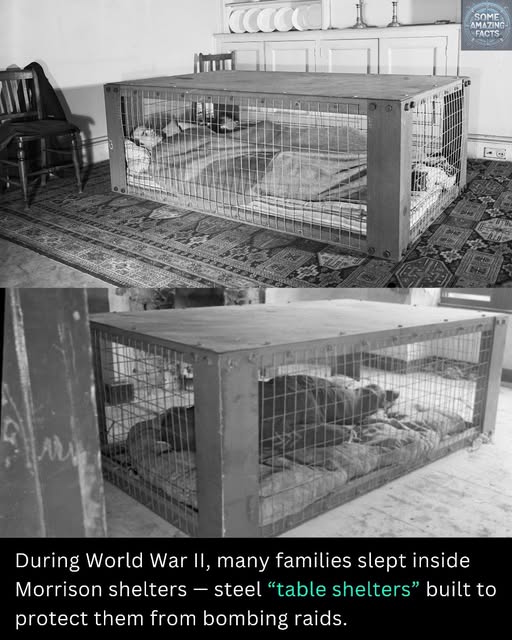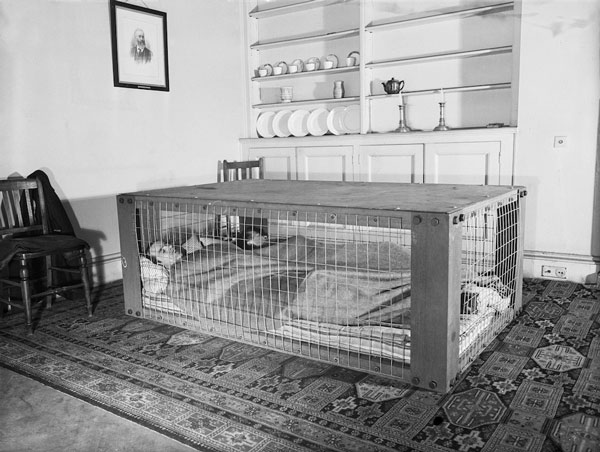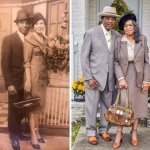The Morrison Shelter: A Tiny Refuge During WWII Bombings

During World War II, as Britain endured the relentless onslaught of bombing raids, millions of families found themselves without adequate protection. With the majority of homes lacking basements or secure structures to shield them from falling bombs, the British government provided a lifeline in the form of the Morrison Shelter. At first glance, this metal contraption seemed rather unremarkable, appearing to be nothing more than a simple metal table. But by night, it became a desperate sanctuary — a small steel cage that families would crawl into, hoping it would withstand the terrifying explosions above.

By day, the shelter served its mundane purpose as a dining table, offering nothing more than a place to sit and eat. But when night fell and the sirens screamed, signaling an imminent air raid, it quickly transformed into a makeshift haven. The shelter’s steel frame, heavy and unyielding, became a crucial barrier between life and death. Entire families — parents, children, sometimes even pets — would crowd into this cramped, metal cage, praying that the bombs would miss their home, or that the shelter would protect them from the worst of the blasts. The weight of the situation was not lost on them, as they lay in fear under a table of iron, their hearts pounding with the knowledge that any moment, a bomb could strike nearby.

These family nights beneath the Morrison Shelter were filled with unimaginable anxiety. The distant rumble of aircraft, followed by the terrifying whistle of falling bombs, would echo through the streets. Families, once accustomed to a sense of normalcy, now found themselves in constant fear of losing everything — their homes, their loved ones, their very lives. Yet, despite the terror outside, the shelter provided some semblance of hope. It was a small, fragile fortress in a world turned upside down, where survival was not guaranteed, but clung to with every breath.
History often focuses on the grand moments of battle, the large-scale events that shaped the world. But the true stories of perseverance are often hidden in the quieter corners of wartime life — in the small shelters like the Morrison, where people fought not with weapons, but with the sheer will to survive. The sacrifices made in these tiny spaces, where families clung together against the odds, remind us that history is written not just on battlefields, but in the hearts of those who endured the darkest of times, hoping for dawn. These shelters were more than just steel and metal; they were a symbol of resilience, of a people’s refusal to give in to the terror surrounding them.










